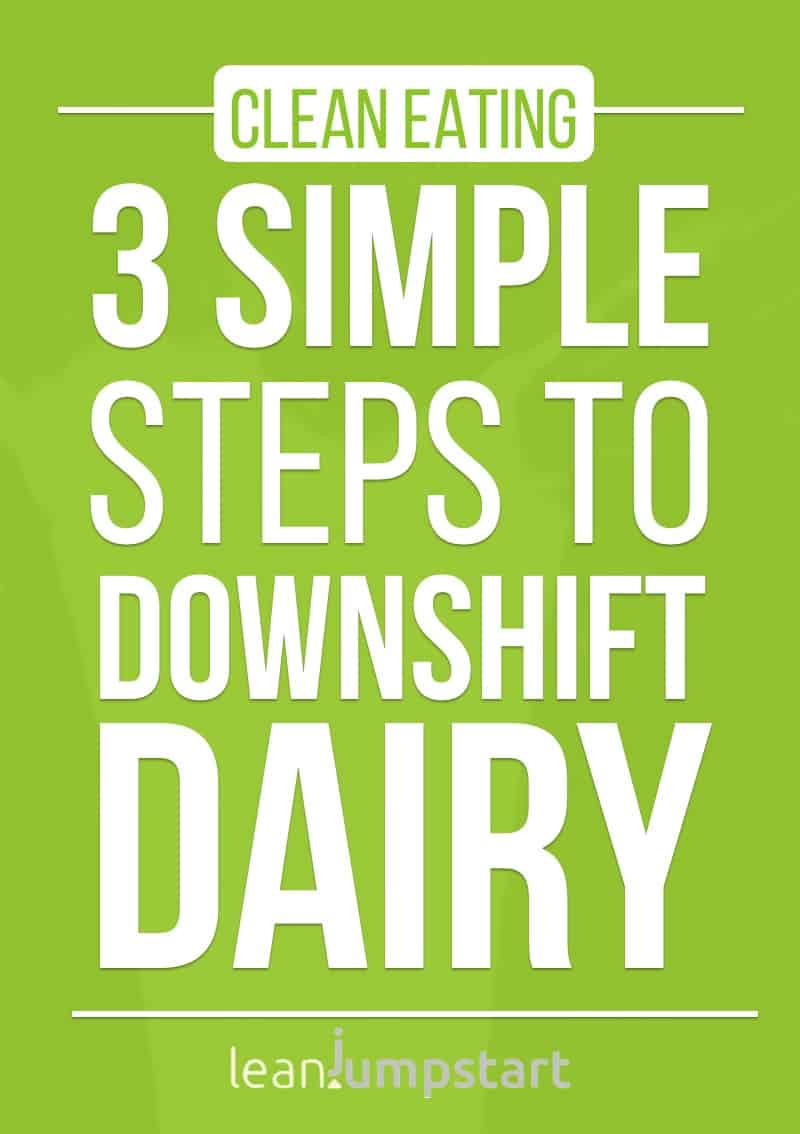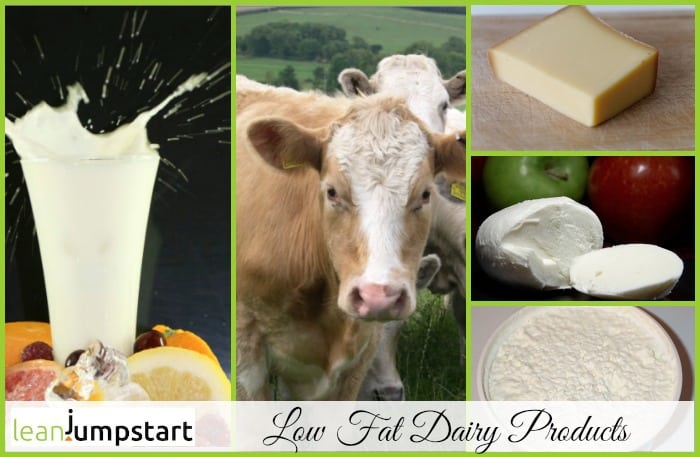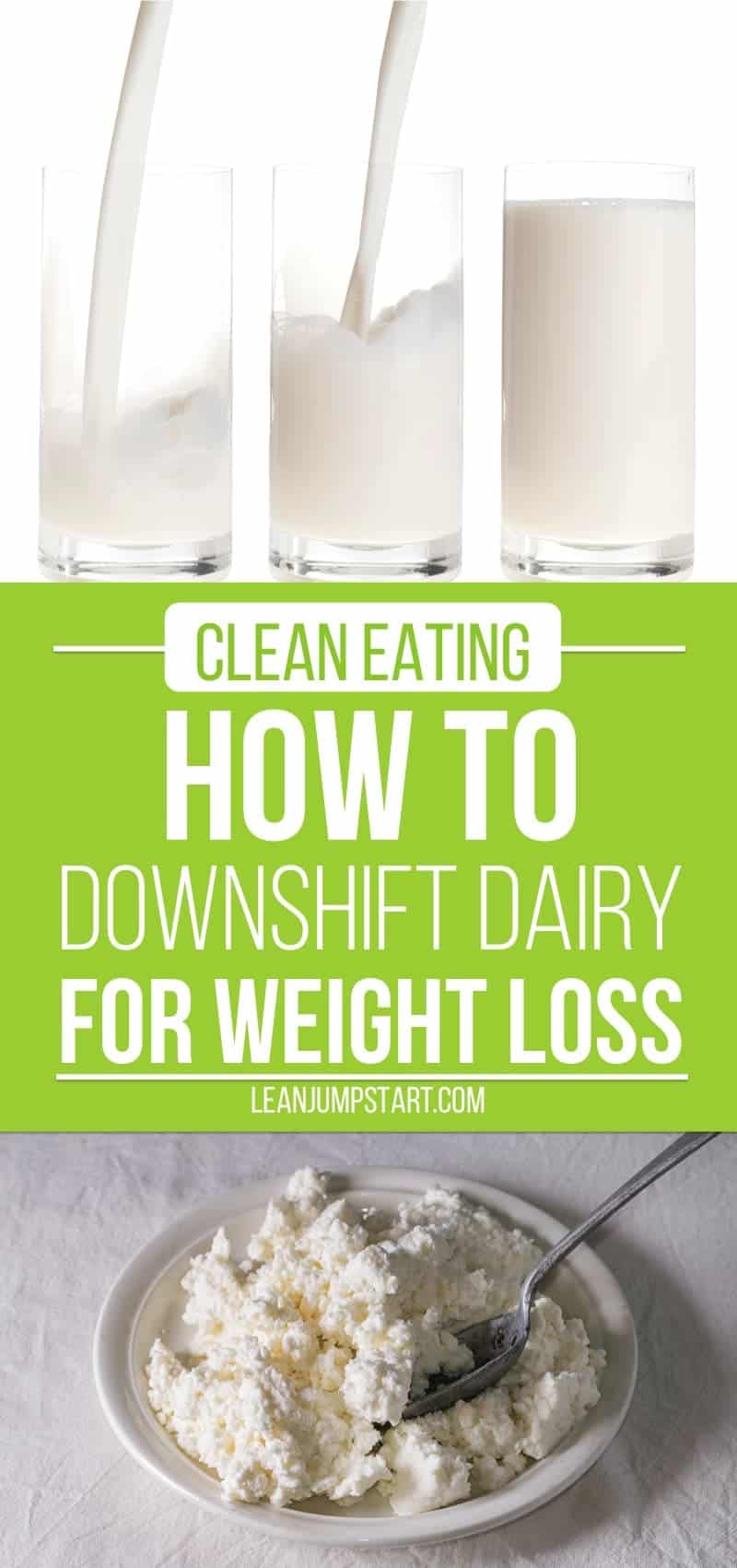Switching to a healthier animal foods intake and consuming low-fat dairy products is the challenge of this week. A simple 3-step habit change will help you to steadily change your whole-fat dairy consumption to low-fat (1%). Feel free to skip this week’s challenge if it works against your core clean eating beliefs.
Low-fat dairy products and clean eating
From the clean eating standpoint, fresh raw milk from grass-fed cows or full-fat Greek yogurt is more natural than processed low-fat dairy.
But…
Sometimes you have to make a compromise. I’ve often mentioned my 80/20 approach to clean eating. Trying to eat clean 100% is not only very stressful but also an unrealistic goal. In the context of dairy, my personal preference is to keep animal fat consumption low.
This traditional staple has a controversial side
Despite being a dietary staple for a very long time, dairy and milk, in particular, have a controversial side.
We have been told from our childhood that it is a good source of calcium and protein. However, the proof that dairy sources of calcium are required for strong bones is weak. Populations that eat no or little dairy do not have higher rates of osteoporosis. In fact, hip fracture rates (a measure of osteoporosis) are lower in non-dairy consuming countries.
On the other hand, it’s easy to get your calcium and protein from legumes like chickpeas, beans or lentils. Kale, broccoli, and green leafy vegetables are excellent sources of calcium too.
Linked to diseases
Research shows that dairy and calcium can lower the risk of colon cancer. But, high dairy consumption has been linked to prostate, breast and ovarian cancer. It can be confusing when the research is contradictory.
Additionally, 70 percent of blacks and Native Americans, and Asians have some degree of lactose intolerance. Eating or drinking dairy products causes them problems like bloating, cramping, gas, and diarrhea. Thus, those that are lactose intolerant should seek out non-dairy milk and cereals that are fortified, as well as foods high in calcium.
The sad fact is that full-fat dairy products (milk, cheese, butter, ice cream) and red meat contain large quantities of cholesterol and saturated fat to one’s diet. Eating high levels of trans and saturated fat, can increase the bad cholesterol in your blood (LDL) and therefore increase the risk of heart disease.
They can make you fat
These unhealthy fats, which are usually solid at room temperature, can also increase the risk of obesity. That does not mean that all fats are bad. What really matters in the context of obesity is the type of fat and the total calories in the diet. Good fats, meaning polyunsaturated and monounsaturated fats, are healthy for the heart and most other parts of the body. These are found in fish, nuts, seeds, plant oils or avocados.
No Common ground on milk and dairy
How many milk servings per day are recommended? This is something that hasn’t been proven by science yet and it is still disputed. The dietary guidelines for Americans recommend that adults and children should consume three cups of reduced-fat dairy per day. But many critics claim that these recommendations may have been influenced by lobbyist of the dairy industry.
Are you fortunate enough to not be lactose intolerant and are you consuming a lot of dairy products? Try to reduce your dairy consumption to leave more room for healthier fats that come from plant foods.
3-step habit change: switching to low-fat products
Here comes a simple 3-step habit change that helps you to shift to a healthier level of dairy consumption. You want to become the person who reduces whole-fat dairy intake and increases the consumption of low-fat dairy products.
Step 1: Use your dairy consumption as a trigger
Step 2: Develop the routine of replacing full-fat dairy with low-fat dairy or plant based products. I will give you some tips on the list of dairy products below.
Step 3: When sticking to this routine for more than one week, as a reward buy yourself a fun coffee cup that reminds you to drink your coffee with low-fat milk. Make sure to invest in a cup that you are happy to use regularly. Throw away old cups that you never use and only take up space in your cupboard.

Gradual Change to low-fat products & wise decisions
Consuming low-fat foods helps with weight and cholesterol control. Most products are now available in fat-reduced options. These products contain the same amount of calcium, protein and vitamin D as whole dairy products. However, as the fat content decreases, the amount of processing to create the product increases.
Making healthy food choices is important. Also, making a gradual change to low-fat dairy products (1%) is easier to adjust to than going straight to nonfat dairy (which is more processed).
Here is a general breakdown to help you to adjust your taste buds to skim or low-fat choices.
Milk:
Start by shifting your milk consumption down to the next level of fat content. Switch to 2% milk if you are currently drinking whole milk. Switch to 1% if you are currently drinking 2% milk.
By using skim milk or 1% milk rather than 2% milk in your coffee, you’ll be cutting your caloric intake significantly. Three tablespoons of skim milk will add only around 15 calories to your cup of coffee.
A fantastic non-dairy option for all clean eaters is coconut milk nutrition (light or regular).
Yogurt:
A great alternative to milk is yogurt as part of the milk sugar is reduced to lactic acid. Always opt for Greek yogurt when you can. The U.S. version is low in fat and high in proteins. You can always mix in your own fruits if you want additional flavor.
Cheese
Some tasty low-fat cheeses include reduced fat cheddar and Swiss cheese and low-fat mozzarella. Low-fat feta cheese is also very tasty, especially in salads or omelets.
Please keep in mind that when fat is removed from cheese the water content typically increases which in return requires more salt to maintain texture and taste. The same is true for cottage cheese.
Lactose intolerance
Other good non-dairy sources of calcium include bok choy, collards, baked beans, quinoa, tempeh, fortified non-dairy milk, fortified cereals and supplements that contain both calcium and vitamin D. It is important that you consume vitamin D with calcium since it supports a better absorption.
Advanced approach
If you are a big milk drinker and drink your milk at every meal, switching to low-fat versions might not be enough. Try to limit your consumption to one to two servings of dairy per day. Also, stay abreast of the latest research findings to stay informed.
Don’t replace dairy for unhealthy carbohydrates
Be careful! It is important to replace dairy with foods that contain healthy fats—not with foods that are high in refined carbohydrates.
What are your strategies?
I’m curious: what’s your biggest lesson from all of this? What is your approach to a healthier dairy consumption?






Physician recommend 500ml of milk everyday for type 2 diabetics, does this not affect the weight management plan
Hello Sybil,
I’m not allowed to give you here a medical advice. The best would be you ask your doctor directly in context of your type 2 diabetic. If he recommends 500 ml too then you should ask him if you could at least switch to low-fat milk instead. My understanding is that Low-fat milk is a great beverage for people with diabetes.